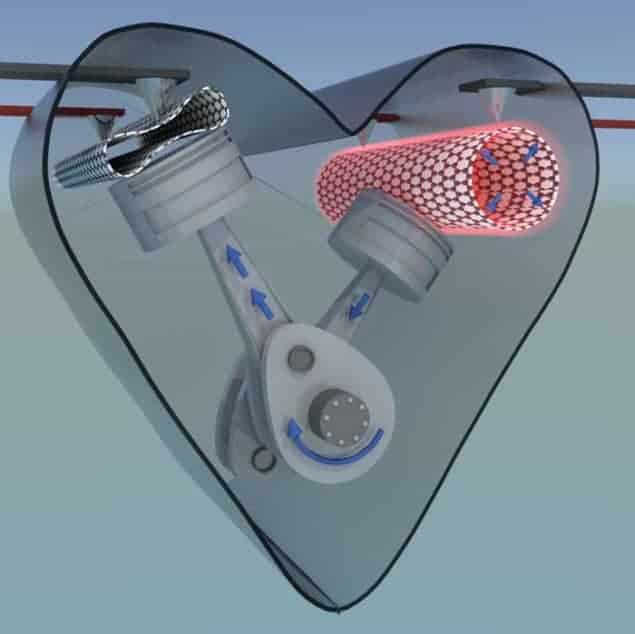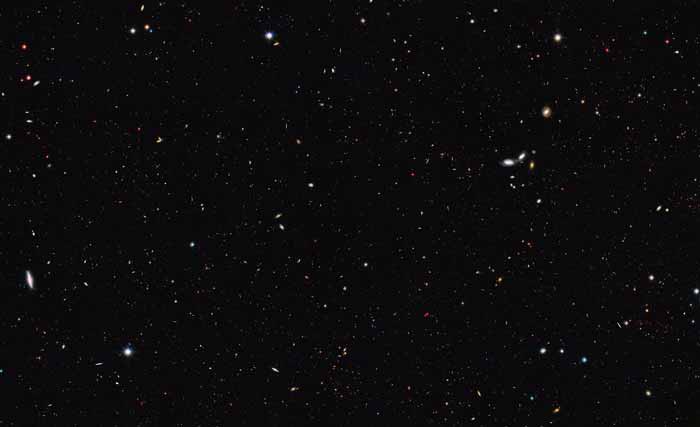Flash Physics is our daily pick of the latest need-to-know developments from the global physics community selected by Physics World‘s team of editors and reporters

Nanotube ‘balloon’ can be inflated and deflated
A tiny carbon nanotube has been inflated and deflated much like a balloon by making small changes to the voltage applied along its length. The work was done by Hamid Reza Barzegar at Umeå University in Sweden, and Alex Zettl at the University of California, Berkeley and could someday be used to create tiny machines and actuators for a wide range of applications. Carbon nanotubes have walls that can be as thin as just one atom. They can be made defect free, which the researchers say could make nanotube-based actuators resistant to mechanical wear and fatigue. Indeed, they we able to inflate and deflate their balloon many times without causing any apparent damage to the nanotube. The research is described in Nano Letters.
Quantum coherence lasts forever, almost
Physicists based in Brazil, Italy, Germany and the UK have shown it is possible to defeat that great enemy of quantum technology: decoherence. The ability of quantum systems to exist in superposition states holds the promise, among other things, of computers that are exponentially faster than today’s classical devices. However, these states are usually destroyed by environmental interference after just a fraction of a second. Physicists can get around this problem by adding additional controls to a system, but doing so uses up huge resources. Quantum error-correction schemes, for example, require multiplying the number of quantum bits (qubits) many times over. In the new work, Gerardo Adesso of the University of Nottingham and colleagues have found that they can delay the onset of decoherence in certain composite systems that do not lose energy to the environment by at least a second – and in principle, they say, indefinitely – without resorting to error correction or other artificial schemes. The trick, they reveal, is to prepare states such that they are observed using a quantum basis that orthogonal to that of the noise source. The researchers observed this “everlasting quantum coherence” in spin systems containing two and four qubits made using nuclear magnetic resonance at room temperature, and they say that such states in future might be used to carry out low-noise magnetometry. Team member Rosario Lo Franco of the University of Palermo adds that plants might exploit a similar scheme in order to maintain the very long coherence times observed when they harvest light. The research will be reported in Physical Review Letters and a preprint is available on arXiv.
Universal census tots up to two trillion galaxies

The most accurate cosmic census ever has found that there are many more galaxies in the observable universe as was previously thought. An international team of astronomers, led by Christopher Conselice from the University of Nottingham, UK, used the latest data and images from the NASA/ESA Hubble Space Telescope to estimate that the visible universe contains around two trillion galaxies – some 20 times more than the previously estimated count of 100-200 billion galaxies. “It boggles the mind that over 90% of the galaxies in the universe have yet to be studied. Who knows what interesting properties we will find when we observe these galaxies with the next generation of telescopes,” says Conselice. The team converted Hubble images into 3D images to make accurate measurements of the number of galaxies at different epochs through the evolution of the universe, looking 13 billion years into the past. They found that galaxies are not evenly distributed throughout the universe’s history and that there were 10 times more galaxies per unit volume (albeit relatively small and faint galaxies) when the universe was only a few billion years old. The team also developed new mathematical models that allowed them to infer the existence of galaxies that are too faint or far away to be seen by today’s telescopes. The work is described in the Astrophysical Journal (ApJ 830 83)
- You can find all our daily Flash Physics posts in the website’s news section, as well as on Twitter and Facebook using #FlashPhysics. Tune in to physicsworld.com later today to read today’s extensive news story on how electron microscopy has been combined with femtosecond spectroscopy.



